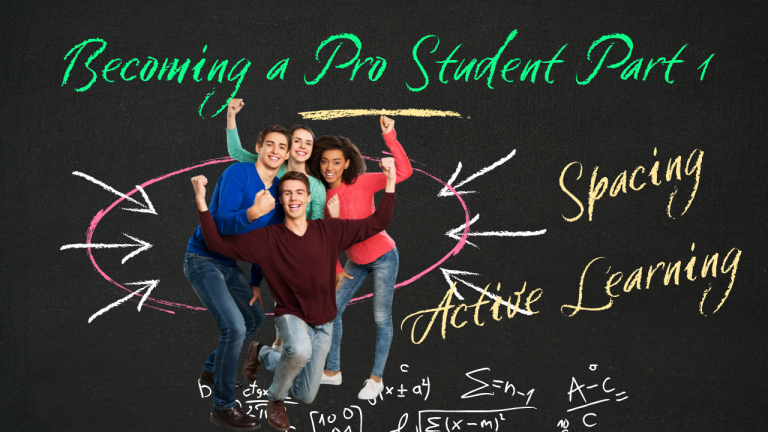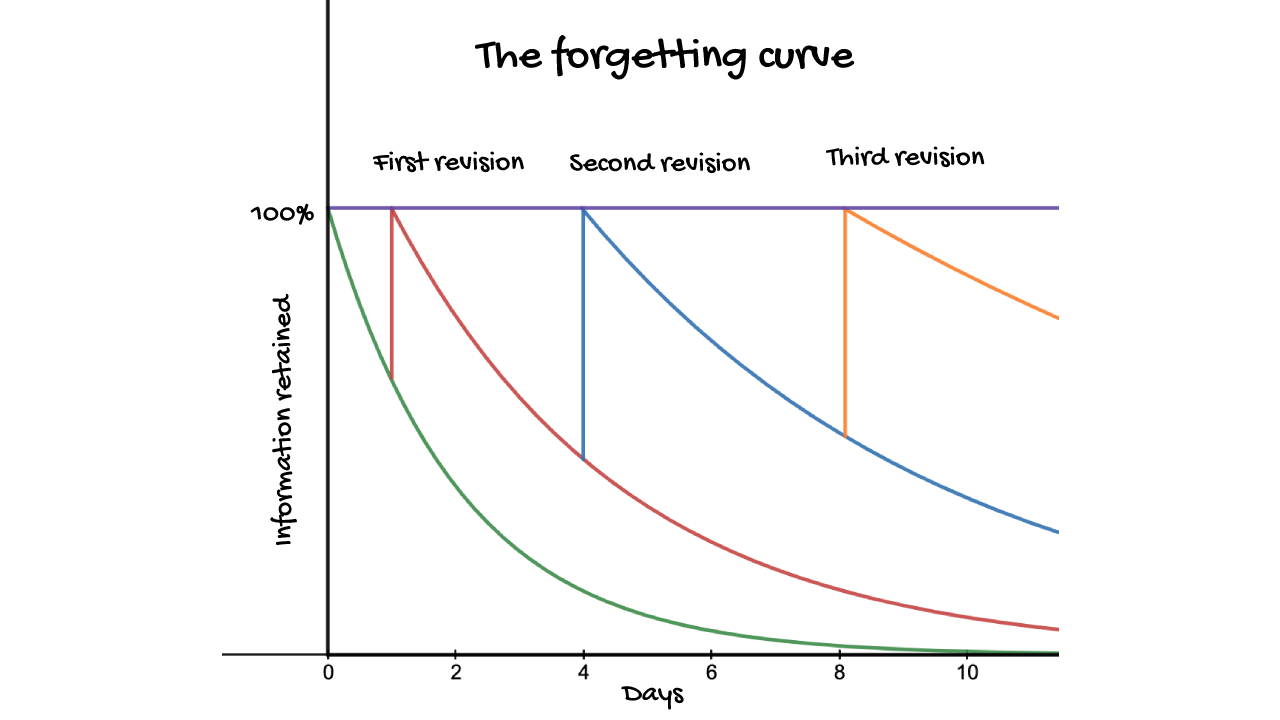Becoming a pro student (part 1)

A lot of students have asked me for study tips in the past. In this post, I am going to share a few. Some of them I followed during my undergraduate and graduate courses, and the rest I learned later.
The goal here is not to study all the time to crack exams. I am not at all recommending to give up all the life fun just to get higher grades. The goal is to organize our efforts to make them more effective. A pro student doesn’t need to study overnight a day before an exam. On the contrary, a pro student is more relaxed than everyone else on a day before exam. You can often find them roaming around in the corridors helping others. They don’t seem to be going through notes just minutes before exam. They know that they have mastered the topics. Our goal is to get to that state.
There is even a higher level goal. The pro students don’t just study for the exam. They want to achieve a level of mastery where they can, not only just explain the concepts to others, but also grasp the underlying ideas and apply them to other related problems as well. There is no limit to the depth one can reach to.
So let’s get started.
1. Spacing
This follows from understanding the forgetting curve. The forgetting curve looks like an exponential decay curve. After gaining new information, our brain forgets most of it (about 40-50%) in a day or two. It takes a long time for the information to get completely erased from our brain. But if we revisit the same content after a long time, it seems more or less like new information again. Basically, the work we did before, while studying it, is lost.
On the other hand, we don’t have time to repeat studying the same concepts over and over again each day. Mostly because we are also gaining new information as well while attending classes.
The best way to address this is by using the concept of spaced repetition. Here, we don’t study the same things every day. Instead, we study them on specific days. It is recommended to have the first repetition in 24 hours after gaining the new information. Basically, we should revisit the concepts on the same day we attend the class. Probably in the evening. Since we just learned it, the concepts are still in our short-term memory and the review part will be quite fast. Minimal efforts. This will reset the forgetting curve and this time the decay will be slower. So, we can revisit the content after a few days or weeks and then after a couple of months as well.

We can even be more organized about which topics need revision. We can record the date for that topic with a numeric score. Each time we revise it, we evaluate how well do we remember it. If the revision seems very familiar, we record a high score, otherwise a lower score. The topics, on which we have low scores, can be prioritized for next revision.
2. Active learning
Repetition alone is not enough sometimes. A lot of times we can just read through pages of the textbook and slides and at the end feel like we can’t recall any of the stuff we just read. This happens because we are not giving our brain enough exercise. We need to make our brain work hard to strengthen the memory bridges. Once those bridges are strong, we will be able to recall the stuff easily.
There are many ways to do this. Normally, I just write a summary of the concept I just learned in my own words. After each topic. This simply makes sure that I am not lost in random thoughts while reading (a problem that is quite common). The summaries also come handy while preparing for the exams. That way I don’t have to go through the same text all over again.
Another way is to read the text in two or more passes. In the first pass, we just skim through the text and just read the headings. After we read headings, we form multiple questions that we expect to answer after learning the stuff. We can skip the first pass of reading if we have already studied the topic in the class, in which case, we already know the questions. We write those questions down on a paper. Then try to find answers of those questions in the text by doing the second pass of reading. This way again our brain is actively looking for certain information in the text and hence it is working harder. I wasn’t aware about this trick. In my machine learning course, my instructor gave a list of self assessment questions for each chapter. I just used those questions and tried to find answers in the text while revising for the exams. Worked like a charm! Not for a single moment I was lost in random thoughts! This even makes it easier to develop more profound understanding of the topics.
When it comes to active learning, I find that mathematical topics are a lot easier to learn if we simply do the exercises after learning a new method or concept. Most textbooks have them right after each topic. But if we are studying from lecture notes, we need to remind ourselves to solve the exercise problems before moving to the next topic. Again, the harder the exercises, the more work our brain does, and it becomes easier to master.
Another way is to learn the topic with the intention of teaching the concept to a friend. I did this a few times. During my undergraduate second year, I already had a reputation of being a pro student (don’t I love bragging!), so I didn’t have to go far to find clients. My friends living next door would just ask for help, and I am happy to teach them. Helps them learn the concepts faster. At the same time, since I am explaining the topics, my understanding improves as well. You can do this too. You don’t need to be an expert to teach someone.
To conclude, we use the concept of spacing to offset the forgetting curve and use the concept of active learning to make the most out of a study session. Above all, don’t forget the main goal: we want to be a student who can truly master the topics.
Hope you liked this. Since I called it ‘part 1’, more part(s) will come eventually (may not be next week). If you want me to cover some particular topics related to study skills or if you wish to share some study tips that worked well for you, fill the form below. Finally, to get my blogs in your emails, don’t forget to subscribe.
